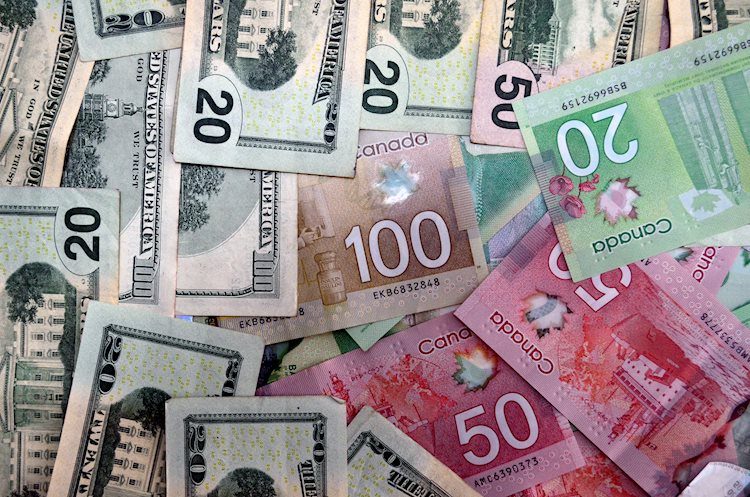- The Canadian Dollar is seeing a rebound alongside market sentiment.
- Canada Unemployment, Wages figures due on Friday alongside US NFP.
- Crude Oil prices are moderating on the low end, capping CAD gains.
The Canadian Dollar (CAD) is seeing a rebound as the broader market sentiment recovers on Thursday, pushing down the US Dollar (USD) and giving riskier currencies some much-needed breathing room.
Canada Unemployment and Average Hourly Wages data is slated for release on Friday, with the data points likely to be overshadowed by another US Nonfarm Payrolls (NFP) in the books.
Daily Digest Market Movers: Canadian Dollar finds foothold as markets send US Dollar lower
- Broad market risk appetite recovery sends equities and risk assets back up, US Dollar and Treasury yields back down.
- Fed’s rate hold and statement on Wednesday signals the end of the rate hike cycle to possibly overeager markets.
- Thursday’s rally gives way to US NFP Friday with Canada Unemployment and Wages data buried in the calendar.
- Canadian wage growth expected to ease, Net Change in Employment forecast to decline from 63.8K to 22.5K for October.
- Canada Unemployment Rate seen ticking upward from 5.5% to 5.6%.
- Canadian home sales broadly decline, key hotspots see sales activity fall to levels only seen in last two recessions.
- US NFP to dominate market data reactions, October jobs additions seen declining from 336K to 180K.
- WTI Crude Oil subdued below $82.00 per barrel, limiting topside gains for Oil-dependent Loonie.
Technical Analysis: Canadian Dollar follows rest of market higher against US Dollar, USD/CAD slips back below 1.3750
The USD/CAD pair fell back below the 1.3800 handle as the Canadian Dollar (CAD) follows market sentiment higher against the US Dollar (USD).
The CAD fell to a twelve-month low against the USD yesterday, sending the USD/CAD to 1.3899, and a relief pullback has sent the USD/CAD into a fresh Thursday low below 1.3750.
Near-term technical support sits at the 50-day Simple Moving Average (SMA) at 1.3625, while a longer-term move toward the downside sees a floor at the 200-day SMA currently rising into 1.3500.
A topside break of yesterday’s peak will see fresh year-long highs for the USD/CAD, with the way clear for a run at 2022’s high bids near 1.3980 set in October of last year.
USD/CAD Daily Chart
Fed FAQs
Monetary policy in the US is shaped by the Federal Reserve (Fed). The Fed has two mandates: to achieve price stability and foster full employment. Its primary tool to achieve these goals is by adjusting interest rates.
When prices are rising too quickly and inflation is above the Fed’s 2% target, it raises interest rates, increasing borrowing costs throughout the economy. This results in a stronger US Dollar (USD) as it makes the US a more attractive place for international investors to park their money.
When inflation falls below 2% or the Unemployment Rate is too high, the Fed may lower interest rates to encourage borrowing, which weighs on the Greenback.
The Federal Reserve (Fed) holds eight policy meetings a year, where the Federal Open Market Committee (FOMC) assesses economic conditions and makes monetary policy decisions.
The FOMC is attended by twelve Fed officials – the seven members of the Board of Governors, the president of the Federal Reserve Bank of New York, and four of the remaining eleven regional Reserve Bank presidents, who serve one-year terms on a rotating basis.
In extreme situations, the Federal Reserve may resort to a policy named Quantitative Easing (QE). QE is the process by which the Fed substantially increases the flow of credit in a stuck financial system.
It is a non-standard policy measure used during crises or when inflation is extremely low. It was the Fed’s weapon of choice during the Great Financial Crisis in 2008. It involves the Fed printing more Dollars and using them to buy high grade bonds from financial institutions. QE usually weakens the US Dollar.
Quantitative tightening (QT) is the reverse process of QE, whereby the Federal Reserve stops buying bonds from financial institutions and does not reinvest the principal from the bonds it holds maturing, to purchase new bonds. It is usually positive for the value of the US Dollar.
Read the full article here

